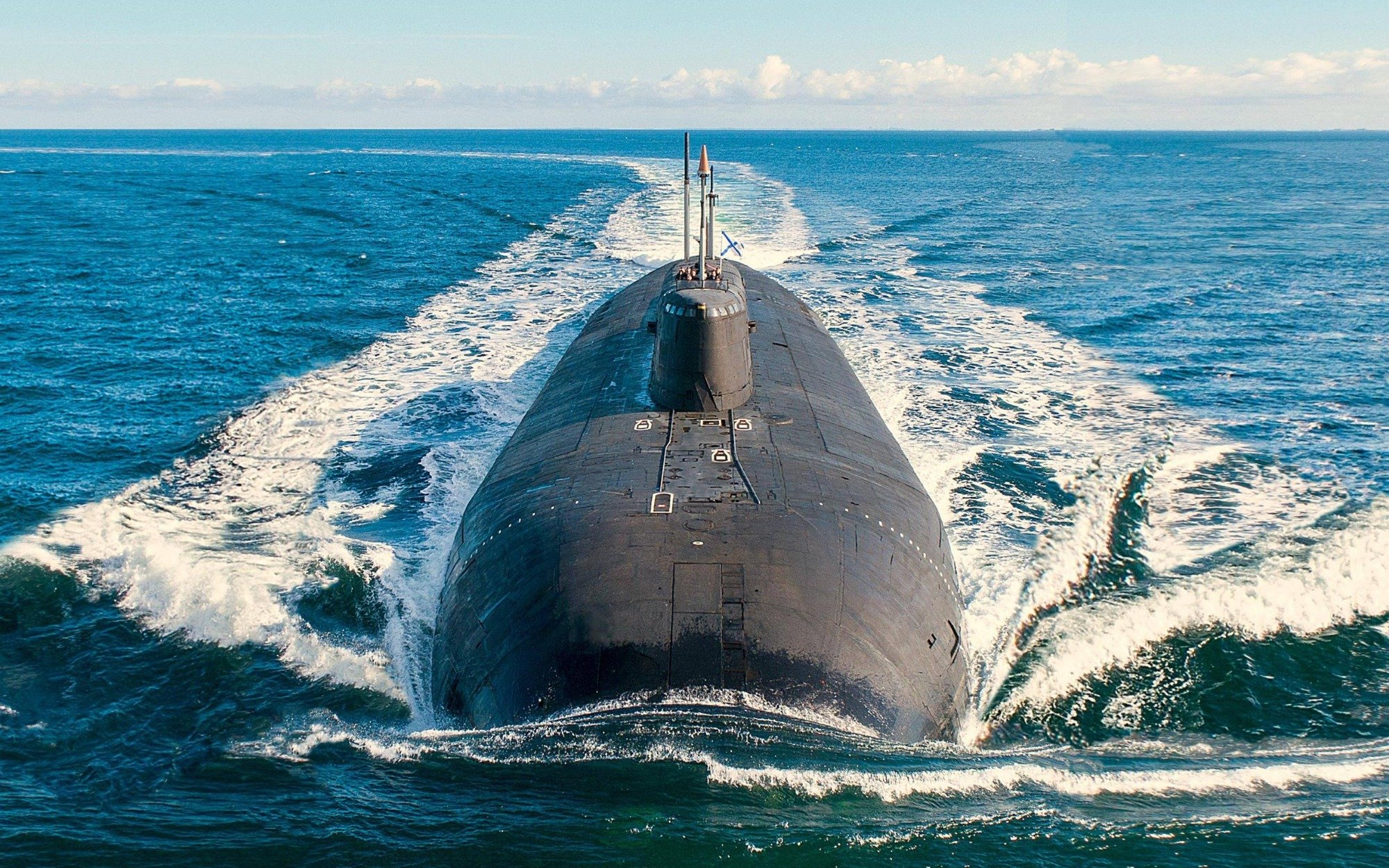Among a slew of inductions to be made into the Russian Navy to bolster its power at sea this year, a nuclear Belgorod submarine equipped with the lethal nuclear torpedo ‘Poseidon’ will enter service sometime in 2023.
It is also often called an ‘Intercontinental Nuclear-Powered Nuclear-Armed Autonomous Torpedo.’
This announcement was made by the Commander-in-Chief of the Russian Navy, Admiral Nikolai Evmenov, who stated that the Belgorod nuclear submarine, which is the carrier of the Poseidon submarine nuclear drones, will be put into service in 2023.
“As the president said, we will accept it this year,” Evmenov said. The multi-purpose nuclear submarine “Belgorod” is an experimental vessel for Poseidon drones, launched in April 2019 at Sevmash.
Previous reports from July last year indicated that the Belgorod submarine was already inducted into service. However, the latest announcement implies the imminent induction of a Poseidon-armed Belgorod into the Russian service.
Although all the details about this set of nuclear-weapon-carrying submarines are classified, it has been previously noted that it is the largest submarine built in 40 years.
Project 09852 Belgorod is a sizable, stealthy, specially designed nuclear vessel constructed from the unfinished hull of an Oscar-II cruise missile submarine. It is believed to have two uses: the first being a host submarine or “mothership” for small, nuclear-powered submarines that can dive deeply, and the second for nuclear strike and deterrence.

The announcement by the Navy Chief comes months after the crew of the Belgorod nuclear submarine reportedly completed a series of tests of the Poseidon torpedo mock-up.
At the time, some unnamed sources told Russian media that test was carried out to check the operation of Poseidon’s launch system. Among the vessels involved in the alleged preparations was the nuclear-powered Belgorod submarine. The weapon was fired to gauge how the sub would behave at various depths after launch.
As per speculations, the Belgorod submarine equipped with Poseidon is expected to join the Russian Pacific fleet. Some unnamed sources stated earlier this year that Russia was working on a naval base to accommodate these Poseidon carriers and that the base would be completed early next year. EurAsian Times, however, could not independently verify this information.
The Deadly Nuclear Poseidon Is Coming To The Sea
The Poseidon UUV is one of Russia’s six strategic weapons, also known as ‘Super Weapons,’ that Russian President Vladimir Putin unveiled during a speech in 2018 at the Manezh Central Exhibition Hall near the Kremlin.
Russia’s Poseidon superweapon gives nuclear deterrence a new dimension, maybe the most paradigm-shifting weapon in existence.
According to some sources, the weapon’s top speed might reach 108 knots, rendering it uncatchable and quicker than existing torpedoes. It is also elusive due to its approximately 1,000 meters (3,300 feet) operational depth.
Poseidon was described as a strategic nuclear weapon with a range of thousands of miles in a Russian presentation (translated) that the BBC could capture on camera.
It can destroy significant economic installations of the enemy in coastal areas and guarantee devastating damage to the country’s territory by contaminating large areas with radioactive material, rendering them unusable for military, economic, or other activity for a considerable amount of time.
Russians have long wished to get around the American ballistic missile defense systems set up in Europe, which has led to a geopolitical imbalance against Russia.
The US has a satellite constellation with infrared sensors to find and monitor Russian intercontinental ballistic missiles. The activation of the missile engine produces intense heat in the air, which creates a temperature difference against the chilly background for the satellites above to detect.
However, satellites can’t see what happens in the depths of the sea. Besides, Poseidon is reportedly designed to emit very little heat and travel silently. The Russian military can therefore avoid a US Ballistic Missile Defense (BMD) check by having the option to deploy nuclear weapons underwater.
It is also said that Poseidon can make “three-dimensional” evasive maneuvers to lengthen its lifespan.
The threat of a Russian submarine armed with a deadly nuclear torpedo has already amplified risks for its foes in the West, owing to the nuclear brinkmanship shown by Russian politicians and media pundits ever since the Ukraine War started.
For instance, Russian TV channel broadcasts have seen several cases of military commentators warning of the nuclear destruction of European countries, especially the United Kingdom.
Earlier this year, Russian TV presenter and propagandist Vladimir Solovyov smirked as he predicted that if Poseidon struck Britain, it would trigger a tsunami and sink the country to the bottom of the ocean.
Earlier, there were rumors that Russia could deploy the Poseidon-carrier Belgorod in the Arctic, which is already fast emerging as another confrontation zone between Moscow and the US-led NATO.
In April this year, Russian state media reported that the Russian Navy planned to launch a new division of the Pacific submarine fleet equipped with lethal Poseidon nuclear-capable torpedoes. This fleet is expected to become operational by the end of 2024 or the first half of 2025.
The Russian Naval Chief’s announcement had laid all speculations to rest. So while there’s little credible information in the public domain about the submarine or the nuclear torpedo, we know they are lethal and fast approaching deployment.
- Contact the author at sakshi.tiwari9555 (at) gmail.com
- Follow EurAsian Times on Google News